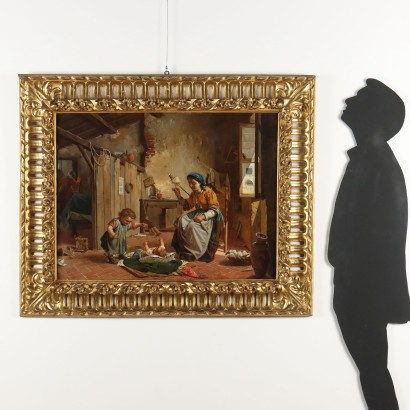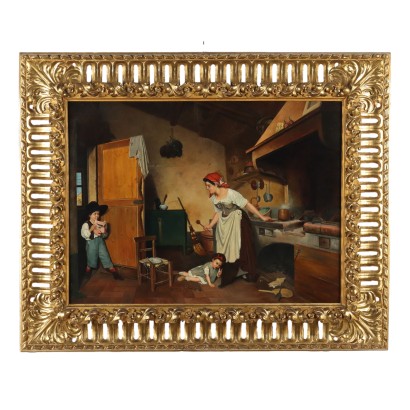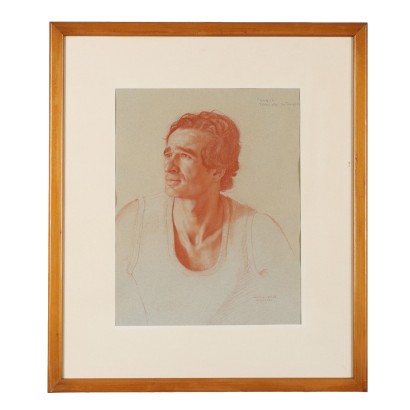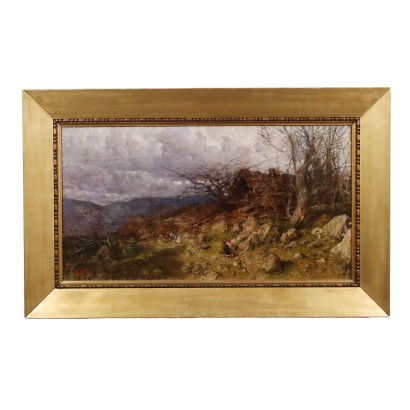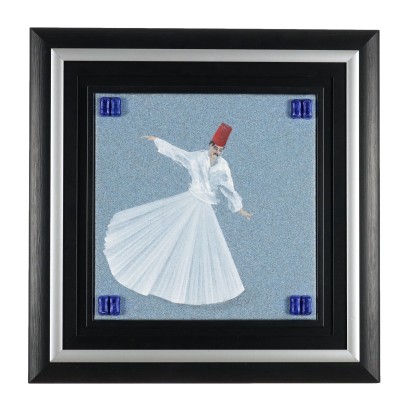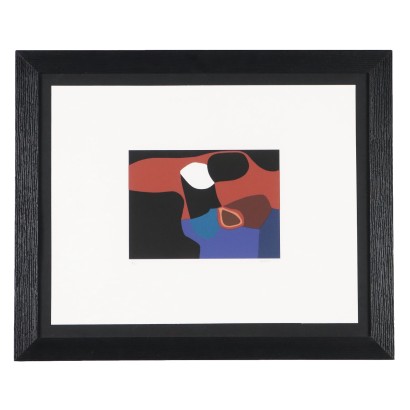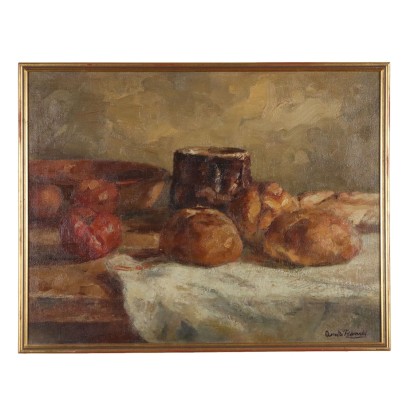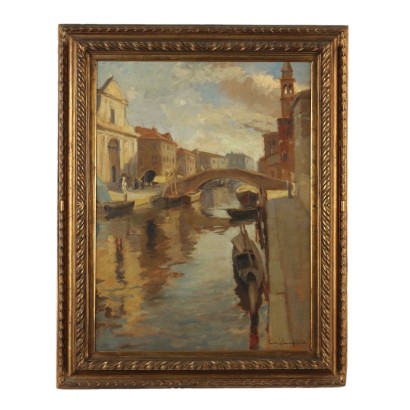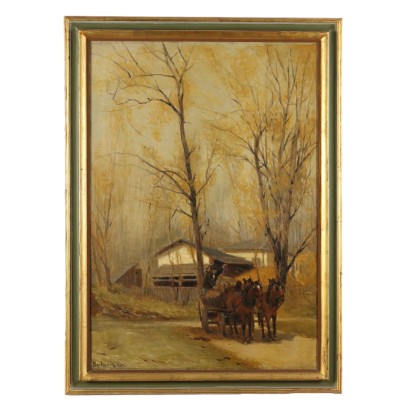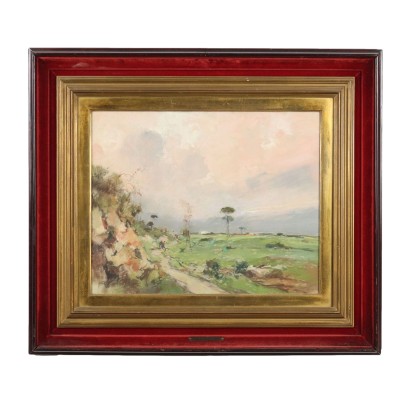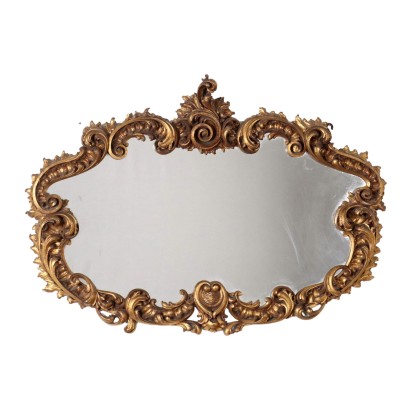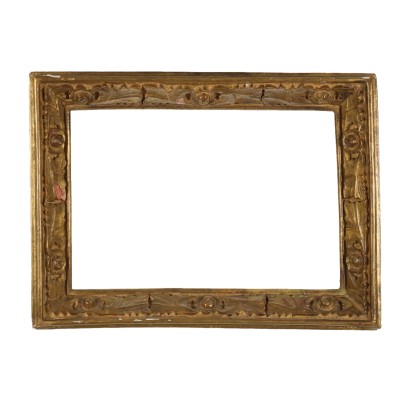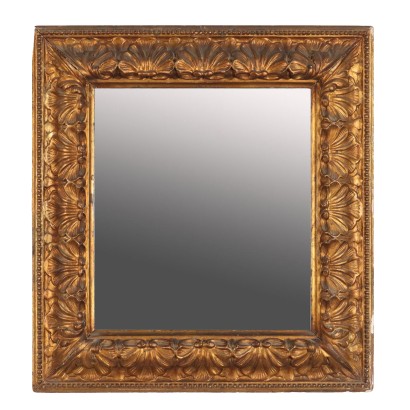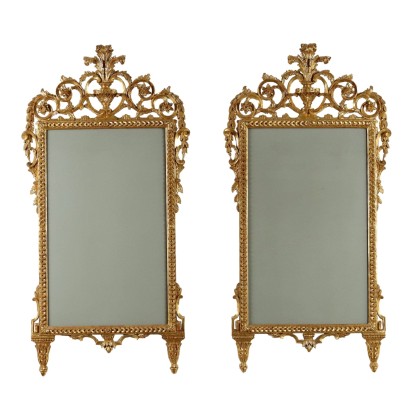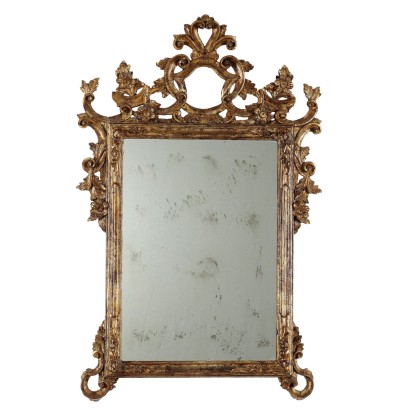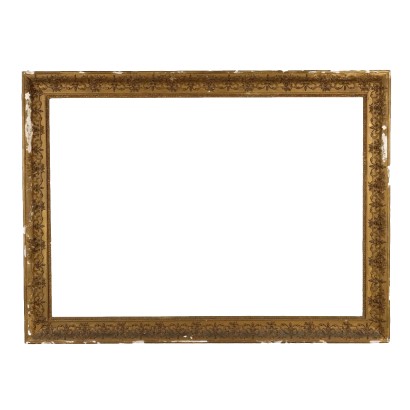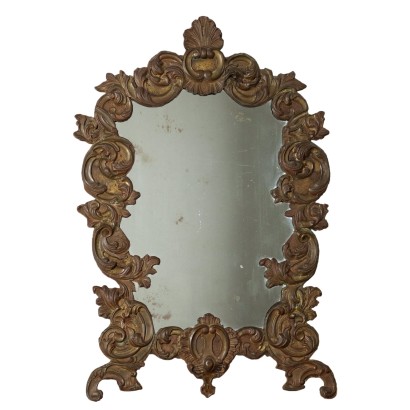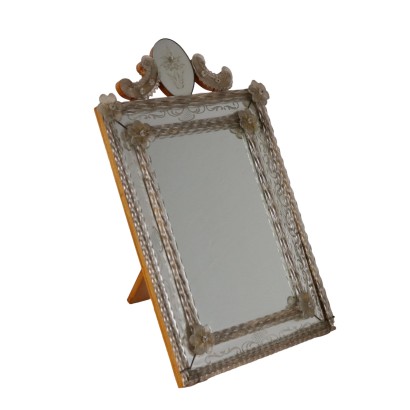Modern Painting Copy from G. Chierici Oil on Canvas XX Century - The Joys of Mother
Features
The Joys of Mother
Artist: Gaetano Chierici (1838-1920)
Artwork title: Le gioie della mamma
Age: 20th Century / 1901 - 2000
Subject: Genre Scenes
Artistic technique: Painting
Technical specification: Oil on Canvas
Description : Le gioie della mamma
Oil on canvas. Early 1900s. The painting reproduces in rather detail the work of the same name painted in 1866 ca. by the Emilian painter Gaetano Chierici, an artist who became famous for a large production of scenes of peasant life, captured in rustic interiors, interpreted through an intimate sentimental adhesion and a clear formal realism, which tell of a small happy and always serene world, often joyful despite poverty, because it is devoid of any intent of social denunciation, but rather representative of the happy conception of family that the artist had. These paintings of his were so successful with the bourgeoisie of the time that they were replicated several times by the artist's own workshop and subsequently also by other painters. Chierici almost always set the scene inside a humble peasant kitchen, full of objects described in minute detail, populated by children intent on their daily activities, by adults who watch them happy and amused: in this scene set in a poor room, a woman sitting spinning, looks smiling tenderly amused at her two little children, the eldest who, standing, steals the pacifier from the little one lying on the floor on a bed of blankets, who stretches out his little hands towards his object of pleasure. The work, in the first canvas, is presented in a carved and gilded wooden frame from the late 19th century.
Product Condition:
Product in very good condition that may show slight traces of wear; may have undergone restoration work carried out by an expert. We try to present the real condition as completely as possible with the photos. If some details are not clear from the photos, what is reported in the description is valid.
Frame Size (cm):
Height: 100
Width: 124
Depth: 7
Artwork dimensions (cm):
Height: 70
Width: 93
Additional Information
Artist: Gaetano Chierici (1838-1920)
Born in Reggio Emilia in 1838, Gaetano Chierici began his artistic career at a very young age, attending courses at the School of Fine Arts in Reggio Emilia and undertaking formative experiences at the academies of Modena, Florence and Bologna, from which he drew purist and Macchiaioli influences that characterised his youthful production. Having returned to live permanently in his hometown in 1866, he turned to genre painting, with a predilection for scenes of peasant life captured in rustic interiors, interpreted through intimate sentimental adhesion and clear formal realism. His subjects, often replicated with minimal variations, met with public appreciation for thirty years in national and international exhibitions (Vienna, Munich, Berlin). From 1882 to 1907 he directed the School of Drawing in Reggio Emilia; in 1889 he was elected to the City Council on a socialist list, eventually holding the office of mayor of the city between 1900 and 1902. This is how the painter justified his choice of subjects in 1899: “If, despite my sixty years, I am still healthy and robust, if I have been able to overcome the vicissitudes and bitter bitterness, which unfortunately I was not spared during my existence, I owe it to this art that takes place in the serene environment of my studio, where the voices and laughter of the protagonists of my paintings echo happily for many hours of the day. This is why my art has always been and still is enclosed in the humble field of the family”. Chierici died in Reggio Emilia in 1920.Age: 20th Century / 1901 - 2000
20th Century / 1901 - 2000Subject: Genre Scenes
Artistic technique: Painting
La pittura è l'arte che consiste nell'applicare dei pigmenti a un supporto come la carta, la tela, la seta, la ceramica, il legno, il vetro o un muro. Essendo i pigmenti essenzialmente solidi, è necessario utilizzare un legante, che li porti a uno stadio liquido, più fluido o più denso, e un collante, che permetta l'adesione duratura al supporto. Chi dipinge è detto pittore o pittrice. Il risultato è un'immagine che, a seconda delle intenzioni dell'autore, esprime la sua percezione del mondo o una libera associazione di forme o un qualsiasi altro significato, a seconda della sua creatività, del suo gusto estetico e di quello della società di cui fa parte.Technical specification: Oil on Canvas
The oil painting is a painting technique using powder pigments mixed with bases in inert and oils.Other customers have searched:
Arte Novecento, dipinti del 900, olio su tavola, pittura olio su tela, arte 800, pittura antica, arte contemporanea, quadro del '900, quadro grande, quadro olio su tela..
Se sei un appassionato d'arte, non perderti i nostri approfondimenti sul Blog Arte Di Mano in Mano e su FineArt by Di Mano in Mano - Arte:
Leggi di più
Ecco alcuni tra i principali articoli:
Vedute
Falsi nell'arte antica
Un messaggio di fiducia per ripartire
La potenza espressiva dell'arte figurativa etiope
Breve Storia del Collezionismo
Giorgio Upiglio, maestro dei libri d'artista
Matthias Withoos detto "Calzetta bianca"
San Rocco pensaci tu - Classic Monday
Ecco alcuni esempi dell'arte del Novecento più bella che puoi trovare da noi:
I Raccoglitori di patate - Lavoro estivo - Augusto Colombo, 1935
I Taglialegna - Lavoro invernale - Augusto Colombo, 1933
Il lavoro femminile, Contardo Barbieri, 1954 ca.
Sapevi che l'arte può essere anche un ottimo investimento (e non solo per grandi portafogli)?
L'Arte tra Collezionismo e Investimento
FineArt: Arte come investimento
Dai un'occhiata alle nostre rubriche di divulgazione sull'arte:
Epoche
Lavorazioni e tecniche
Mostre ed Eventi
Protagonisti
Leggi di più
Ecco alcuni tra i principali articoli:Vedute
Falsi nell'arte antica
Un messaggio di fiducia per ripartire
La potenza espressiva dell'arte figurativa etiope
Breve Storia del Collezionismo
Giorgio Upiglio, maestro dei libri d'artista
Matthias Withoos detto "Calzetta bianca"
San Rocco pensaci tu - Classic Monday
Ecco alcuni esempi dell'arte del Novecento più bella che puoi trovare da noi:
I Raccoglitori di patate - Lavoro estivo - Augusto Colombo, 1935
I Taglialegna - Lavoro invernale - Augusto Colombo, 1933
Il lavoro femminile, Contardo Barbieri, 1954 ca.
Sapevi che l'arte può essere anche un ottimo investimento (e non solo per grandi portafogli)?
L'Arte tra Collezionismo e Investimento
FineArt: Arte come investimento
Dai un'occhiata alle nostre rubriche di divulgazione sull'arte:
Epoche
Lavorazioni e tecniche
Mostre ed Eventi
Protagonisti
Product availability
The product can be seen at Cambiago
Immediate availability
Ready for delivery within 2 working days from ordering the product.




